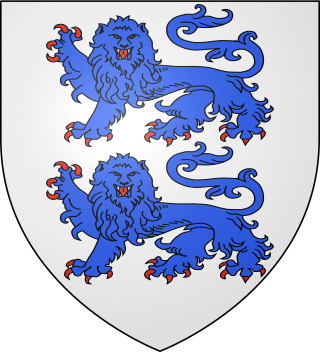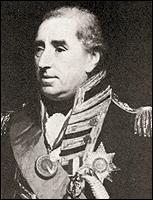
There have been six baronetcies created for persons with the surname Smyth, two in the Baronetage of England, one in the Baronetage of Great Britain, one in the Baronetage of Ireland and two in the Baronetage of the United Kingdom. One creation is extant as of 2010.

There have been two baronetcies created for members of the Hanmer family of Flintshire, Wales, one in the Baronetage of England and one in the Baronetage of Great Britain. Only one creation is extant as of 2008. The third Baronet of the second creation was elevated to the peerage as Baron Hanmer in 1872, a title which became extinct in 1881. The family name derived from the manor of Hanmer in the Diocese of St. Asaph.

The Errington Baronetcy, of Ness in the County Palatine of Chester, was created in the Baronetage of the United Kingdom on 26 June 1963 for Sir Eric Errington, a British barrister, Royal Air Force Officer and Conservative politician who served as a Member of Parliament from 1935 to 1970. He was Chairman of the Executive Committee of the National Union of Conservative and Unionist Associations and was knighted in the 1952 Queen's Birthday Honours List.

There have been eight Baronetcies created for persons with the surname Jones, one in the Baronetage of England, one in the Baronetage of Great Britain and six in the Baronetage of the United Kingdom. Three of the creations are extant as of 2010.

There have been two baronetcies created for members of the Hardy family, both in the Baronetage of the United Kingdom. The first creation became extinct on the death of the first baronet in 1839 and the second creation became extinct on the death of the fifth baronet in 2017.
There have been three baronetcies created for persons with the surname Bernard, one in the Baronetage of England, one in the Baronetage of Great Britain and one in the Baronetage of the United Kingdom. Two of the creations are extinct and one is extant.

There have been three baronetcies created for persons with the surname Chapman, one in the Baronetage of Great Britain, one in the Baronetage of Ireland and one in the Baronetage of the United Kingdom. Two of the creations are extinct while one is extant.
There have been nine baronetcies created for persons with the surname Lloyd, three in the Baronetage of England, three in the Baronetage of Great Britain and three in the Baronetage of the United Kingdom. Two of the creations are extant as of 2010.

There have been twenty one baronetcies created for persons with the surname Williams, eight in the Baronetage of England, three in the Baronetage of Great Britain and ten in the Baronetage of the United Kingdom. Only six of the creations are extant as of 2017.

There have been four baronetcies created for persons with the surname Hope, three in the Baronetage of Nova Scotia and one in the Baronetage of the United Kingdom. As of 2010 one creation is extant, one dormant and two extinct.

There have been two baronetcies created for persons with the surname Duckworth, both in the Baronetage of the United Kingdom.
There have been seven baronetcies created for persons with the surname Lawrence, one in the Baronetage of England, one in the Baronetage of Great Britain and five in the Baronetage of the United Kingdom.
There have been six baronetcies created for persons with the surname Thomas, three in the Baronetage of England, one in the Baronetage of Great Britain and two in the Baronetage of the United Kingdom. Two of the creations are extant as of 2016.
There have been five baronetcies created for persons with the surname Evans, one in the Baronetage of Ireland and four in the Baronetage of the United Kingdom. All of the baronetcies are now extinct.
There have been two baronetcies created for persons with the surname Devitt, both in the Baronetage of the United Kingdom. One creation is extant as of 2007.
There have been four baronetcies created for persons with the surname Preston, two in the Baronetage of Nova Scotia, one in the Baronetage of England and another in the Baronetage of the United Kingdom.
There have been three baronetcies created for members of the Farquhar family, one in the Baronetage of Great Britain and two in the Baronetage of the United Kingdom. One creation is extant as of 2008.
The George Baronetcy, of Park Place in the County of Middlesex and of St Stephen's Green in the County of Dublin, was a title in the Baronetage of the United Kingdom. It was created on 18 September 1809 for Captain Sir Rupert George, First Commissioner for Conducting the Transport Service married Magaret daughter of Thomas Cochrane by his first marriage, and their daughter Charlotte married 28 February 1820 her cousin Richard Verity of Dean House, Huntington. The title became extinct on the death of the second Baronet in 1856. The Georges were a County Laois family, whose estate was at Clophook near Stradbally.

The Sheppard, later Cotton-Sheppard Baronetcy, of Thornton Hall in the County of Buckingham, was a title in the Baronetage of the United Kingdom. It was created on 29 September 1809 for Thomas Sheppard. He married Elizabeth, daughter of Reverend William Cotton, through which marriage Thornton Hall came into the Sheppard family. Their son, the second Baronet, assumed by Royal sign manual the additional surname of Cotton in 1806. The title became extinct on his death in 1848.

The Bayntun-Sandys Baronetcy, of Miserden Castle in the County of Gloucester and of Chadlington Hall in the County of Oxford, was a title in the Baronetage of the United Kingdom. It was created on 26 September 1809 for Edwin Bayntun-Sandys (1774–1848). He had been born Edwin or Edwyn Sandys, but had assumed the additional surname of Bayntun. He did so, by Royal sign manual, in 1807. The change was in order to inherit from the will of William Bayntun (1717–1785), a lawyer of Gray's Inn and husband of his first cousin once removed, Catherine Sandys (1737–1804).











